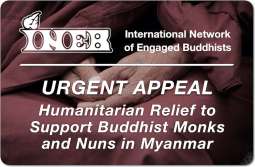摩訶僧祇 Mahāsāṃghika. See 大衆部.
Mahāsaṃghika
(Sanskrit). The adherents of the self-styled ‘Majority Community’ or ‘Universal Assembly’, a school of Buddhism which originated in the schism with the Sthaviras that occured after the Second Council (see Council of Vaiśālī) and possibly just prior to the Third Council (see Council of Pāṭaliputra I). The dispute that led to this schism seems to have largely concerned with interpretation of the Vinaya, in respect of which one side took a more liberal approach. A degree of doctrinal difference also seems to have been involved concerning disagreements over the nature of an Arhat (see Mahādeva). This school went on to become one of the most sucessful and influential forms of Buddhism in India, giving rise to several subschools in later years such as the Ekavyāvahārika, the Lokottara-vāda, and the Bahuśrutīya. Some of the teachings of this school concerning the nature of Buddhas and Bodhisattvas have features in common with Mahāyāna concepts, but since there is no evidence of innovation by the Mahāsaṃghikas in this respect before the rise of the Mahāyāna, in the view of some scholars, such elements should be ascribed to Mahāyāna influence. According to this view there is thus not much likelihood that the Mahāsaṃghika school played a part in the formation of the Mahāyāna before the latter emerged as a distinct entity. Other scholars see evidence for the converse in the formation of certain Mahāyāna sūtras, such as the Nirvāṇa Sūtra.













